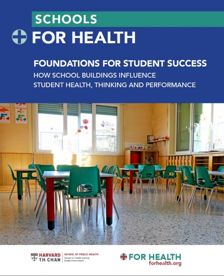EPA offers evidence-based publication for healthier schools and healthier students


- Synthesize more than 30 years of scientific research about the impacts of indoor environmental quality in schools.
- Identify diverse metrics of success beyond standardized test scores.
- Provide an accessible, evidence-based guide to the acute and chronic effects our school buildings have on us each day.
You can download the report here.
What makes this report essential reading?
- More than 20 studies show that school conditions, such as indoor air quality, temperature and acoustics, have significant impacts on student standardized test performance. More importantly, when we take steps to mitigate adverse exposures, performance improves. The report highlights key findings across seven key indoor environmental conditions.
- Improving your schools’ indoor environmental quality is not just about the students. Teachers have the highest proportion of work-related asthma cases compared to other non-industrial occupational groups. Headaches, allergies, fatigue and throat strain are commonly documented by teachers in deteriorating or poorly maintained buildings. Finding ways to improve their overall well-being can reduce costs for substitute teachers and improve teacher retention.
- Everyone wins when using effective dust and pest management strategies. Students, teachers and staff are less exposed to asthma triggers and custodial staff are safer when caustic chemicals and detergents are not used.
- Children breathe larger volumes of air relative to their body size, ingest twice as much dust daily, and have larger pupils, higher core body temperatures, faster metabolisms, greater hormonal changes, and less efficacy to change surrounding environmental conditions compared to adults. Buildings become a critical environment for child health, development and performance. Ensuring healthy indoor environments is not just jargon, but a strategy to help students reach their full learning potential.
As states finalize their Department of Education Every Student Succeeds Act (ESSA) plans, health-centric investment, maintenance and operation of our K–12 buildings provide an effective strategy for addressing the root causes of poor attendance and test performance. In the coming months, we will discuss what the latest science tells us about schools’ indoor air quality, temperature, mold, moisture and dust and its impacts on health, thinking and performance.
With this information, school stakeholders are equipped to recognize health is not just a buzzword but a real opportunity to optimize student performance by taking evidence-based action.
For more information or to download the report, click here.
